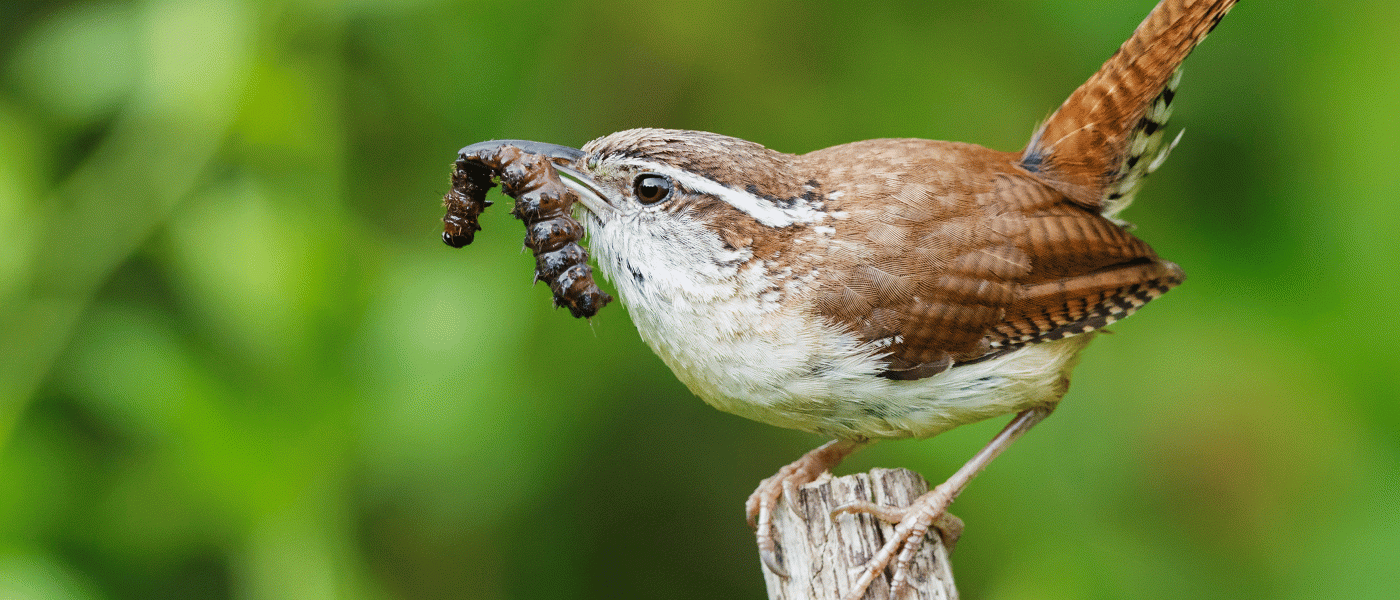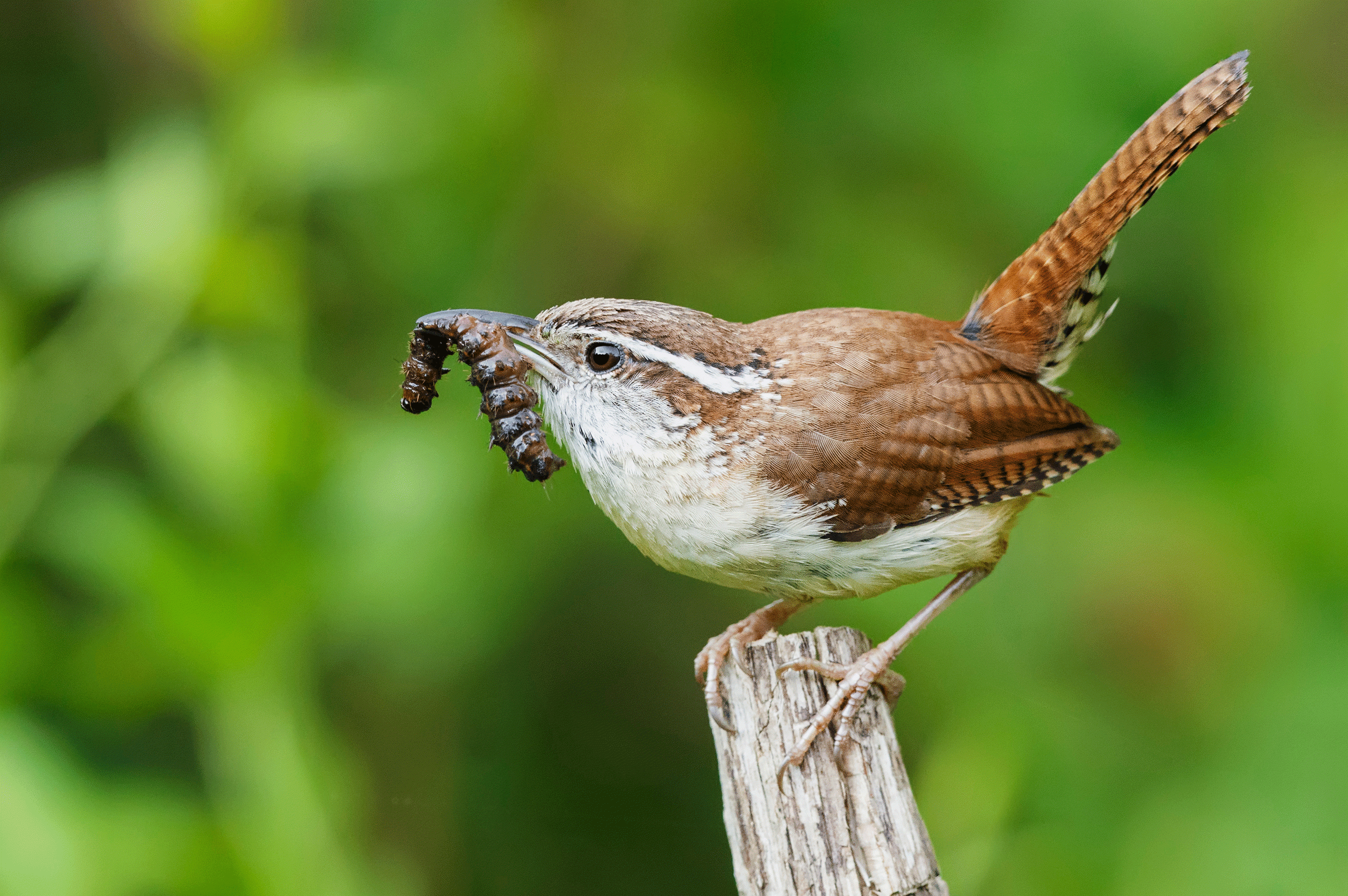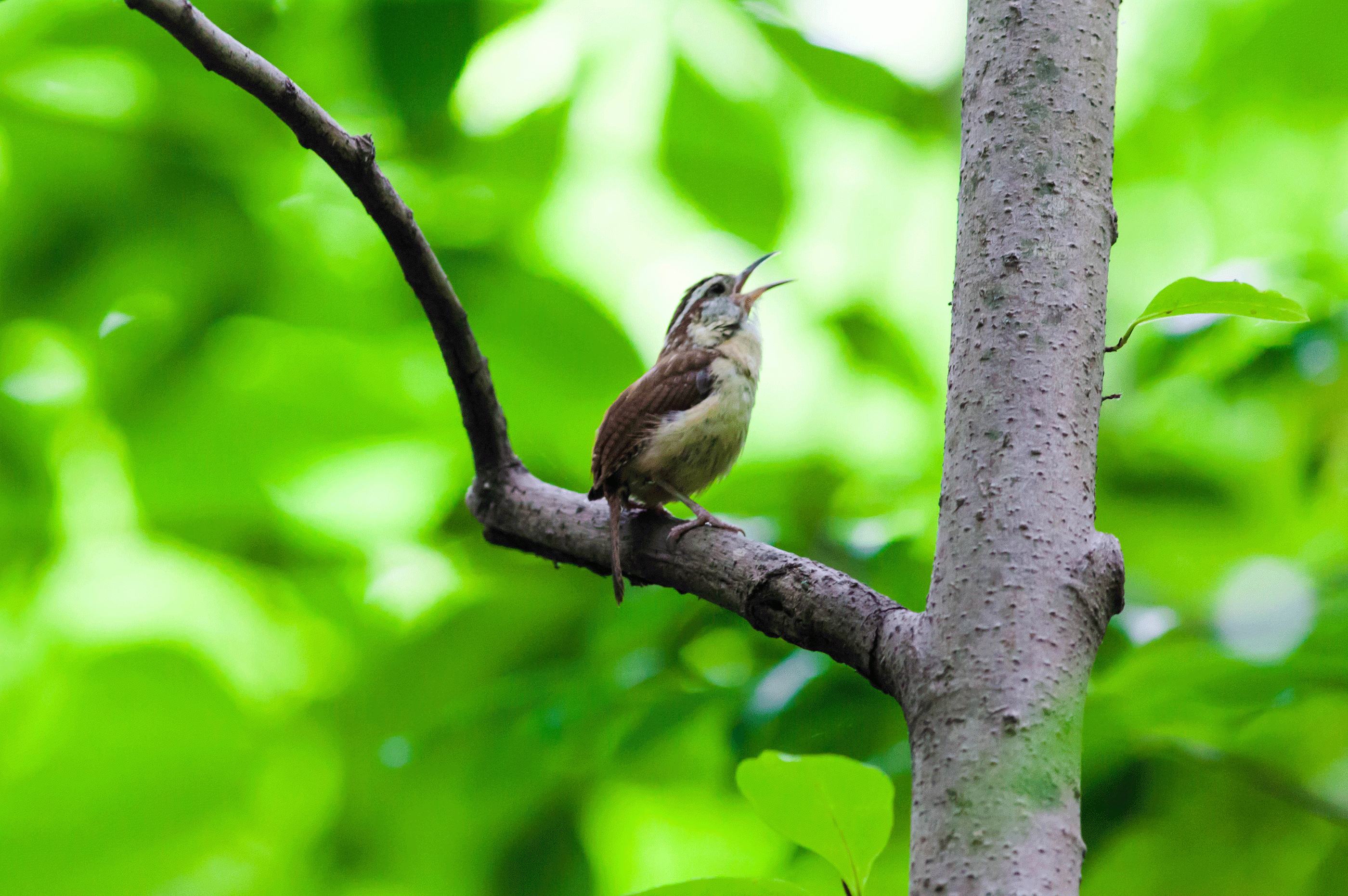Birds of Brooklyn: Carolina Wren
While most bird species are decreasing in number, the Carolina wren is increasing. How is that?
The Carolina wren is a nonmigratory species. It depends on finding insects for food, and as climate change progresses, there are simply more insects around during the winter. That gives this particular bird a better chance at survival. In the past, harsh winters would make finding food almost impossible, and the Carolina wren would suffer dramatic population decreases. But there is more to the story.
Carolina wrens are what we call cavity nesters. They build their nests in mailboxes, flowerpots, old, discarded shoes, and manmade bird boxes. They also nest in rubble consisting of fallen tree limbs, brush piles, and what some might just call junk. As humans have divided up forests for suburban development, there is more of this stuff around, which has given the wrens another advantage. Another factor: People are now feeding birds more frequently, providing high-energy suet for them to enjoy during the winter months.
In the NYC area, Carolina wrens usually nest twice during nesting season, which can last from late March to October. Generally speaking, nesting pairs are committed to each other for life, which can be as long as eight years. The nest is usually between three and six feet off the ground, and each one is only used once during per season. Males and females work together to build it using grass, leaves, and other such material.
The female incubates the eggs for about two weeks while the male feeds her. After two weeks as nestlings, the young fledge, and they stay together as a family group, searching the ground, fallen trees, leaf piles, and anything lying around that might harbor insects. Those of us with backyard decks might see them “clean” the deck by consuming any insects that they find. They even give deck chairs a good working over. Using their sharp bills, they probe nooks and crannies search of food. Adults bring their youngsters and show them how it is done.
The Carolina wren is the largest wren family member in the eastern U.S. And just like their smaller cousins the house wren and the winter wren, Carolina wrens are great songsters, and they sing all year round. They are breeders and residents of Prospect Park and probably Central Park as well. They are fairly loud, and it is possible to hear and see them just by taking a walk in the Garden or a neighborhood park, though these shy, small, brown birds are sometimes difficult to spot. One way to distinguish the Carolina wren’s singing from other wrens: They sing in a duet! The male sings his song, very powerfully and loudly, and then almost immediately the female answers singing her song. Be sure to listen and look for this thriving, duet-singing, insect-eating, beneficial bird.
The Birds of Brooklyn series looks at some of the most familiar and fascinating birds that call Kings County their habitat.




